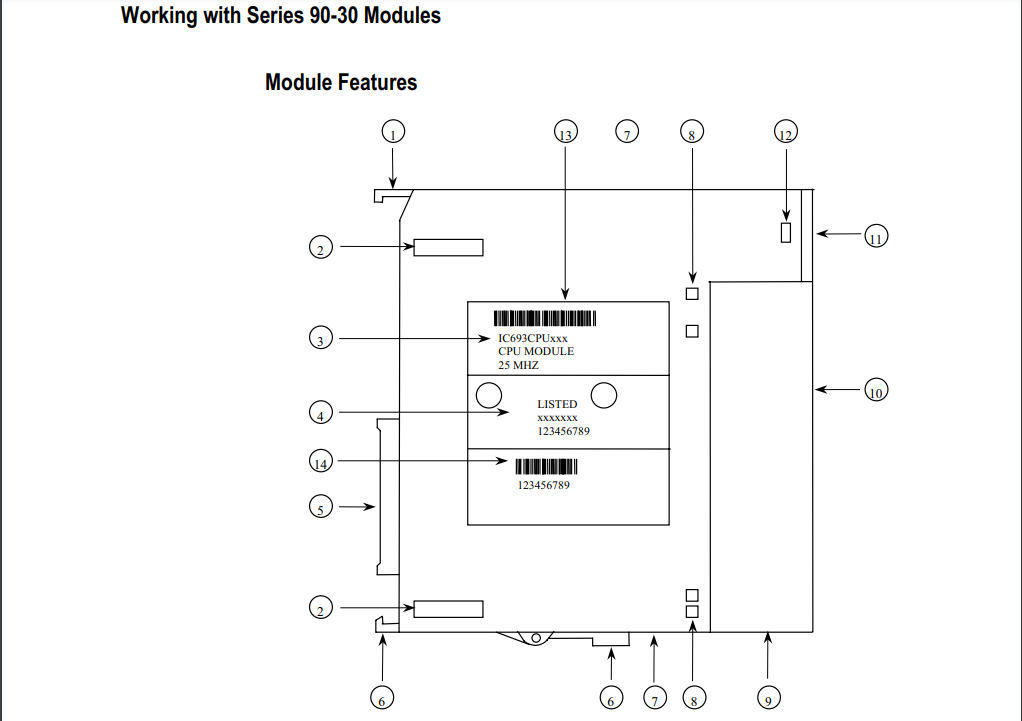The GE Fanuc Series 90-30 Programmable Logic Controller (PLC) is part of the GE Fanuc Series 90 PLC family. Known for its versatility, the Series 90-30 PLC offers two key features that make it a powerful choice for a wide range of applications:
Programmability: The Series 90-30 can be programmed to perform various control functions, making it adaptable to different tasks and industries.
Modular Design: It is built from a wide range of modular, plug-together components, allowing for customizable system configurations. By selecting the right components and developing an appropriate program, the Series 90-30 PLC can be tailored for virtually any application.
The Series 90-30 PLC system is comprised of several types of components, which fall into a few basic categories. Each category plays a specific role in the system and is discussed in detail in separate chapters of the manual. These categories include:
Baseplates serve as the foundation of the PLC system since most other components are mounted on them. At a minimum, every system requires at least one baseplate, which typically houses the CPU, and is therefore referred to as the "CPU Baseplate." Systems that require more modules than can fit on a single baseplate utilize additional Expansion and Remote baseplates, which connect to the main system. The Series 90-30 offers baseplates in two sizes, 5-slot and 10-slot, defined by the number of modules they can accommodate.
Each baseplate in the Series 90-30 PLC system requires its own power supply module, which is always installed in the left-most slot of the baseplate. There are several power supply models available to cater to different power requirements.

The modules in the Series 90-30 PLC system have several key features, as illustrated in Figure 2-1:
By understanding these components and their functions, users can effectively design and implement a Series 90-30 PLC system to meet their specific needs.
Our hours